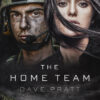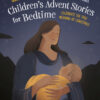Historical Post by Gail Gaymer Martin
Build a 3-Dimensional Hero Using Core Personalities – Part II
In Part 1, I explained Core Personalities and gave you the basic information needed to use these personalities to create fictional heroes and heroines. Today I will go more deeply into the subject of Core Personalities by adding more of the techniques novelists use to create characters.
After digesting the personalities of the four core types from Terrance Real’s book How Can I Get Through To You, you can see the opportunities to build some interesting characters and create dynamic conflicts. Consider plotting a thriller where two elitists are on opposing forces or plotting a romance with the one character being a feeler and the other an analyzer. Put two drivers together in a story built around a family dynasty. Conflict is brewing in any of those scenarios.
To add to the total character, you will take the basic core personality and add a past that will help the reader understand why one person is driven, why another lives with self-importance, and another can find a positive in the most negative situation. You are a mix of genetics and experience, and to help readers believe in your characters and find them compelling, you must develop them just as you have become who you are. Remember that your past (backstory) is made up of a multitude of elements: upbringing, family discipline, education, religious attitudes, health issues, birth order, family dysfunctions, successes and failures, location (south/west/north/east or rural/urban), and income.
As you build these core personalities, begin thinking how these characters will dress, their language and diction, their manner of responding and reacting to situations. You can see that each will be different.
The feeler will speak in a more flowing language using animation. The language could be more poetic, using alliteration and similes. He will emphasize the good, and avoid talking about the bad. A woman might dress more colorfully, with gussy jewelry and more ruffles. A man might take more chances in trying something new, fads or something outside the box.
The driver will speak in shorter, emphatic sentences. He doesn’t waste time. He wants to get to the nitty gritty of the topic. No flowery language for him. He is organized in both his speaking and in his apparel. He dresses for the situation, but clothes aren’t his concern. He focuses on getting things done and accomplishing his goal.
The analyzer will be thoughtful in his speech and will not waste words. He won’t speak until he’s thought the situation through, and come up with the best response. He will ask questions, dig deeper, and not be afraid to pry. He expects answers. He will dress conservatively. He wears basic appropriate clothing for the occasion and doesn’t take chances in style. He prefers tradition.
The elitist will use a large vocabulary and good grammar. He’ll speak clearly and decisively as if what he says is truth whether it is or not. He will stand back and observe rather than jump into a mundane conversation. He could be a name dropper both in style of clothing, and in who he knows. His apparel will be influenced by the situation. At a black tie dinner he will wear a designer tuxedo, but he’s not afraid to be his own person and make others think it is appropriate. They will sometimes follow his lead, thinking if he can do it maybe it’s the best way to dress. No matter what he wears, he will stand out in the crowd.
As you weigh these characters and their interactions, notice how conflicts can easily arise depending on their roles in your novel. Don’t always make the boss the elitist. An employee could outshine the owner and bully him, if he’s not confident in his role. You set the scenario. Although we often think of women as the feeler, try this attribute on a man. Don’t make him effeminate, but make him care and show he does. By working with core personalities, you can create some unexpected characters with compelling conflicts.
And finally remember that your characters will change from the beginning of the novel to the end. When two elitists battle face to face, it will cause one to change. Perhaps he realizes that his elitism is only a cover for what he thought he lacked in his past, and he walks away from the battle feeling he is a winner. The driver who falls in love with a feeler can learn that he’s destroying his chances for happiness by thinking success in his business is the most important thing in his life. He learns that loving and being loved is the ultimate happiness.
With these techniques, you will create dynamic believable characters!


